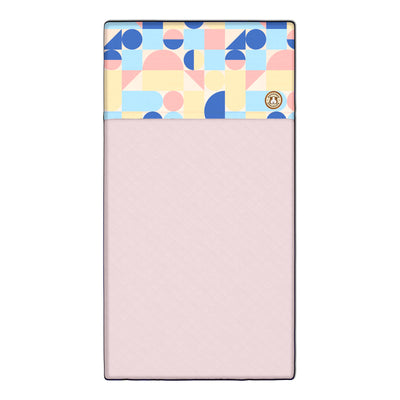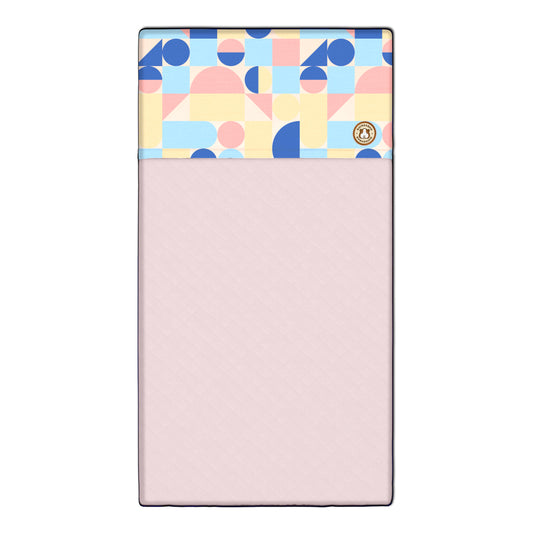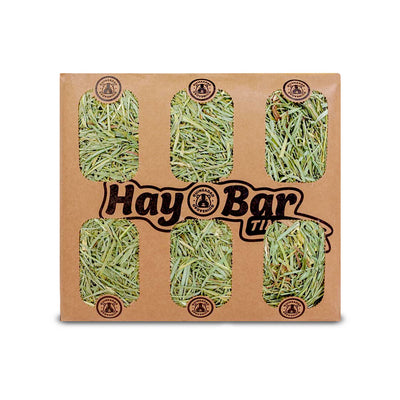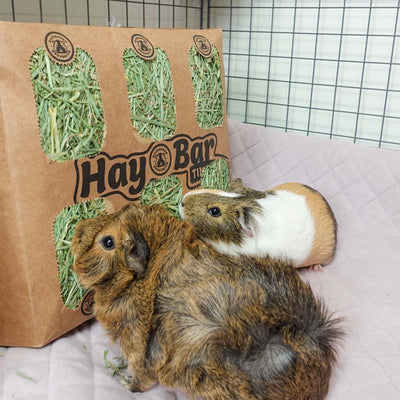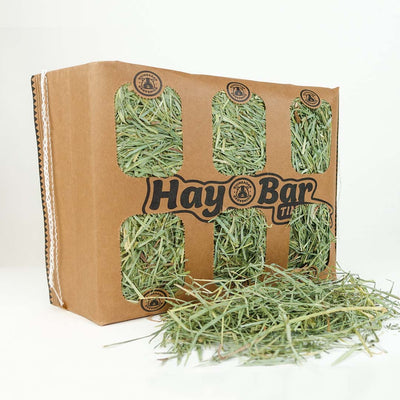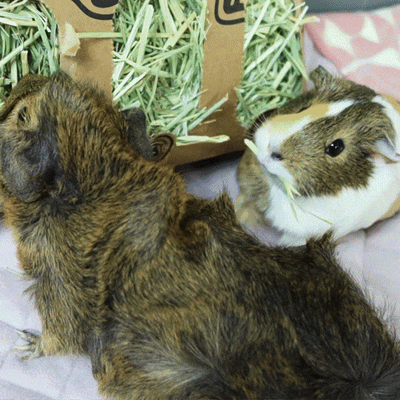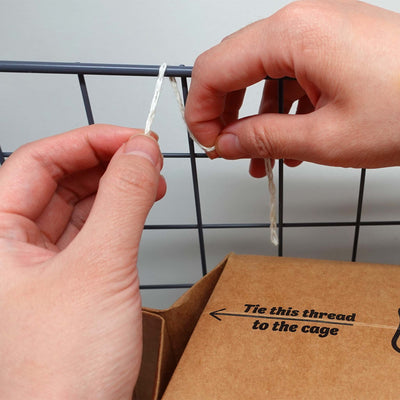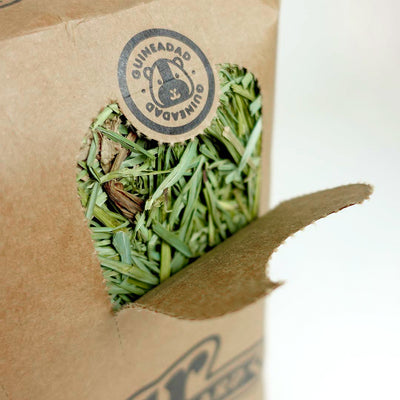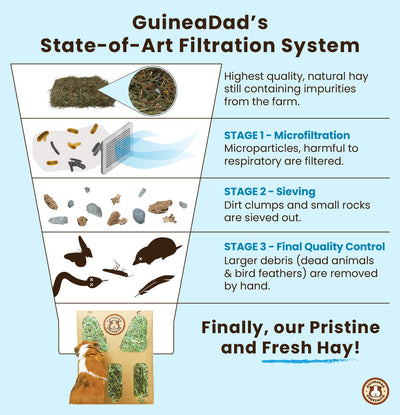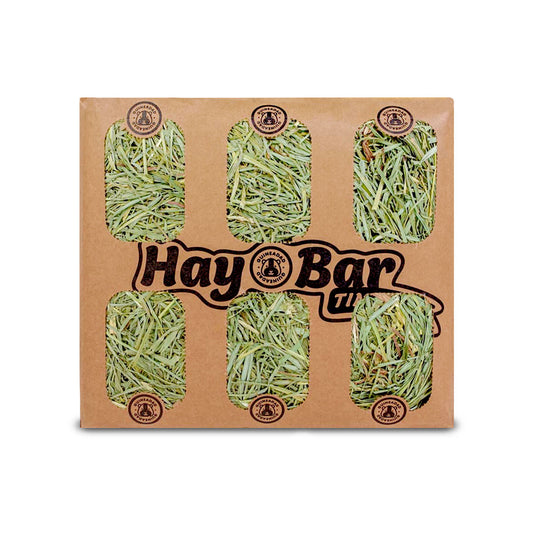Whether you’re a new or guinea pig owner or an experienced one, it’s still important for you to know the different things that your guinea pigs don’t like! This will make it easier for you to bond with your guinea pigs, and make it an easier process for your guinea pigs to trust you and be comfortable around you more quickly!
By knowing these different things that your guinea pigs dislike, they’ll be less likely to run away from you or make those sounds that they tend to make when they’re annoying and unhappy towards you.
Guinea pigs don’t like being picked up and touched in the wrong spots

This is probably one of the more obvious things that guinea pigs don’t like. You’ll definitely know this if you’ve ever tried to pet or pick up a guinea pig for the first time, especially if you hadn’t known the off-limits spots beforehand!
It can be a little disheartening when they run away when you go to pick up a guinea pig for some cuddles or just want to give them a quick stroke of their fur. However, it’s important to understand that as humans, we are so much bigger than them and it can be pretty scary and overwhelming when something as big as us looms over them the same way that a predator would out in the wild.
Even though they’re domesticated and now live with us in our homes where there aren’t any threats of predators trying to hunt them down, you have to understand they’re acting on their instincts as natural prey animals. In order to earn a guinea pig’s trust, it’s important to only pick them up in the proper way and respect their boundaries.
The proper way to hold a guinea pig is by sliding one hand underneath the chest, with the other hand supporting their bottom. Hold them close to your chest in order to give some support to their back, and don’t hold them too tightly. As an added precaution, try sitting down while you’re holding them.
It’s important to keep in mind that just because your guinea pig is seemingly allowing themselves to be picked up by freezing, this may not be the case. One of the ways that guinea pigs express their discomfort and/or fear is by freezing, so if you go to pick up a guinea pig and they seem frozen in place, it’s because they don’t think they can escape from the situation.
If the guinea pig is calm and doesn’t attempt to escape, while also still seeming curious, then the guinea pig may be comfortable with being held. However, if they’re still frozen or are squirmy, then it may be best to let them go.
If you’d still like to pick up your guinea pig and hold them without making them uncomfortable, you can try utilizing something like the pouch that comes in the Offbeat Piggy Play Package. This can make it super simple to pick up your guinea pigs and make sure that they're not being touched in their no-go zones!
Just gently guide them into the pouch, which can be done with the encouragement of a treat or two, and they will be snuggled up and tucked securely inside.
Generally many guinea pigs dislike being touched anywhere that isn’t their head, shoulders, or their upper back. Everywhere else is a no-go zone, especially when it comes to their butt. In order to try to keep your piggies comfortable, keep your petting in the areas that they’re OK with. This will ensure that they know they can trust you to respect their boundaries.
Guinea pigs don’t like taking baths
This one combines a few different things that they don’t like, so you can imagine how the whole experience of bathing can be pretty unpleasant for them!
Bathing combines the experiences of being touched, being in an unfamiliar environment, and contact with water to create the ultimate uncomfortable situation for guinea pigs. It’s important to keep in mind that guinea pigs don’t actually need to be bathed very often because they’re self-groomers.
This means that they can keep themselves relatively clean, and their eyes even secrete a fluid that they use to clean their faces! Generally, guinea pigs only need an actual bath once or twice a year at most.
When it comes to longer-haired guinea pigs, they may need baths more often than their short-haired friends. This is because their hair can sweep up and absorb their urine or poop and other kinds of unpleasant debris, so it’s important to keep their hair clean.
One way that you can do this is by, at the very least, keeping the hair on their butt shorter than the rest! This will keep your guinea pigs from having poop and pee from being embedded in their fur and prevents harmful conditions like fly strike from occurring.

If you need to bathe your guinea pig in water, make sure to do it in very shallow water, an inch or two deep at most, and use shampoo that is meant for guinea pigs, not other animals.
Remember that guinea pigs get cold very easily and quickly, so it’s important to do this whole bathing process as quickly as possible. When the bath is done, make sure to pat dry your guinea pig as best as you can, and use a ‘low heat’ setting on a hairdryer to dry them off completely.
Guinea pigs don’t like getting their nails clipped.
And we know that guinea pig parents don’t like clipping their guinea pigs’ nails either! It’s an equally unpleasant experience for both parties, and can even be scary for first timers!
When cutting guinea pig nails, it’s so important to be extra careful and not cut the guinea pig’s nails too short. If the nails are cut too short, it can cause some bleeding and discomfort for your guinea pig.

When cutting your guinea pig’s nails, make sure that you take your time throughout the whole process, and even take frequent breaks if you find that it’s necessary. Make sure to do the cutting when your guinea pig is relaxed. This means that you may have to take a break after each nail that you cut. It’s important to stay patient and take it slow.
It can be extremely helpful to make cutting your guinea pig’s nails into a two-person job. This can ensure that your guinea pig can be distracted by one person while the other does the actual clipping.
It can be good to have vegetables or treats on hand for some positive reinforcement throughout the whole process, and can even help your guinea pig associate the whole experience with the good memories of receiving treats and vegetables. In order to avoid overfeeding your guinea pig treats, however, we recommend using vegetables more often than the treats!
Guinea pigs don’t like breaking routine.
This can especially be the case when it comes to their eating schedule! Guinea pigs are smarter than some people give them credit for, and they can remember the times that they are supposed to receive their food. This is usually the case with their fruits and vegetables.
Guinea pigs should be eating around one cup of fresh vegetables a day, while hay should be in unlimited supply in their cage. Many people give their guinea pigs that one cup of vegetables portioned out at different times or day, or sometimes all at once at a certain time of day. Regardless of which case it is, and when, your guinea pigs will remember!
Sticking to this familiar schedule and routine that they guinea pigs have become comfortable with is one of the best ways for you to build your guinea pig’s trust in you. When you stray from this schedule, you may notice that your guinea pigs will wheek and squeak at you when they believe it’s time for them to receive their vegetables.
This goes for other parts of their diet as well. Try to refill their water at the same time, as well as their pellets! Their hay should be in constant, ample supply at all times anyway. If you have trouble sticking to a refilling routine for their hay, we recommend making use of a hay feeder of some kind that doesn’t need to be refilled as often.
For example, the GuineaDad Hay Bar and GuineaDad Hay Box are both densely packed with 100% hay that has been filtered for dust and other kinds of harmful debris.
Because the Hay Box and Hay Bar are designed to replace traditional hay feeders and hay racks—they don’t need to be refilled, rather, can just be replaced as soon as they're empty. Both of the packaging types are helpful when it comes to reducing hay waste and mess!
Guinea pigs don’t like when other guinea pigs annoy them.
This one isn’t too surprising, because guinea pigs can get annoyed at each other just like humans can get annoyed at each other! However, they definitely react in ways that we definitely don’t. You don’t see humans making noises at each other or biting each other to get other people to leave them alone. Not adult humans, anyway. You might see a kid or two bite each other!
Guinea pigs have different methods of letting other guinea pigs know when they’ve had enough. They’ll either make a variety of guinea pig noises and sounds, or they’ll nip at each other, or sometimes lunge at each other!
GuineaDad’s guinea pigs, Ru and Mi are good examples of this. Mi loves to annoy Ru and will do it on purpose, provoking her until Ru responds in some way to let her know she’s over it. Mi will scamper away afterwards, and you can always tell she’s proud of herself and is satisfied with the results.
This is relatively common, so we wouldn’t be too concerned about this happening amongst your guinea pigs, but if it’s happening too often and results in injuries between your guinea pigs, this is when we’d consider separating the guinea pigs. This is to give them some space from each other and give them some time to calm down.
To reduce the amount of conflict between your guinea pigs, make sure that your cage is large enough for the number of guinea pigs you have! This is not only so they have enough space to properly exercise, but it also makes it easier for your guinea pigs to escape and go into their own separate corners when they’re in some need of alone time.
You can also include more hideys and tunnels to give your guinea pigs more places to hide when they’ve had enough of socializing with each other. Because they’re able to get away and be alone, it’s less likely that your guinea pigs will annoy each other too much and to the point where they’re fighting. The Humane Society says that 10.5 square feet for two guinea pigs is the minimum, and more space is always better!
Guinea pigs don’t like traveling.
This is another case of guinea pigs being put into new environments, which isn’t something they enjoy very much. This is because as prey animals, they’re always extremely cautious about their surroundings and take their time getting comfortable so they can find safe spots in their home to hide. If you’re taking them traveling somewhere super suddenly, it can be very jarring and even stressful for them.
Not to mention, usually when you have to take them somewhere, you have to put your guinea pigs into a carrier, which is a very small, enclosed space. This can be very stressful for your piggies as well. It’s important that if you’re having to put your guinea pigs into a carrier in order to transport them somewhere else, you do it for as little time as possible in order to not put them into distress for too long.
If you’re taking your guinea pigs somewhere in a car, make sure that you put their carriers on the actual car seats and belt the carriers in. This reduces the amount of sudden movements that will jostle the carrier that could scare your guinea pigs. Make sure trips are short, or if they have to be longer, make sure you check on your piggies often, at least once every two to three hours.
We keep emphasizing stress because excess amounts of it can be very bad for your guinea pigs. Stress and the immune system are connected and too much stress can actually weaken your guinea pig’s immunity, which will put them at risk for catching infections! Try to reduce your guinea pig’s stress as much as possible.
Guinea pigs don’t like loud noises.
Guinea pigs are extremely anxious animals that are sensitive to loud sounds and can be easily startled! Their sense of hearing is so much better than their sense of sight, and you’ve probably already gathered this fact on your own. Sometimes guinea pigs can hear their humans chopping up vegetables for them from rooms away!
Because their sense of hearing is quite good, it makes sense that loud noises can not only be frightening, but it can be overwhelming to their senses. This is why it’s very important to consider the noise levels of different locations in your home when you’re choosing a spot for your guinea pigs’ cage.
A good rule of thumb to follow would be to choose a spot that has access to some of the activity in your home, but isn’t too close to sources of loud noises. For example, you could keep their cage in your living room, but away from your TV and speakers.
It’s good to keep the cage in a spot that allows them to interact with you and the rest of your household, without being too overwhelmed by too much noise. This is great for bonding with your guinea pigs and allowing them to become accustomed to your comings and goings, as well as become used to the types of noises they can expect to hear from the things that you do in your home.
However, if you happen to have other pets, you may have to keep your guinea pigs in a separate room entirely. This can work in their favor, however, because it ensures that they’re in a quiet, peaceful environment that they can relax in!
Guinea pigs don’t like dirty cages.
They may be animals, but that doesn’t mean that they want to lie around in their own filth! Guinea pigs appreciate a clean, sanitary living space as much as anyone else. This is especially true since unsanitary living conditions put them at higher risk for getting sick or catching infections.
Infections can be pretty serious for guinea pigs, and in some cases they can even be life-threatening. This is why it is important to keep their cage clean at all times to avoid putting your guinea pigs through this unnecessary risk.
You can ensure that your guinea pig’s cage is clean by cleaning often and thoroughly, and by using the proper kinds of bedding. With our own cage, we spot clean once or twice a day, which entails vacuuming up our guinea pigs’ poops, as well as any stray hay and dust with a small hand vacuum.
Once a week, we wash their fleece guinea pig cage liners. In our own cage, of course we use the GuineaDad Liners and GuineaDad Premium Liners. Both of these are extremely absorbent and dry quickly, which is what helps keep our guinea pig cage clean not only of urine, but also of any odor!
The fibers that the liners are made up of are coated in an antibacterial agent that inhibits the growth of bacteria and prevents any bacteria from lingering as well. By only having to wash and replace the liner once a week, it makes cleanups and keeping our guinea pig cage clean so much easier and faster.
Guinea pigs don’t like dirty hay.

This goes hand-in-hand with the fact that guinea pigs don’t like their cages to be dirty! They’re animals, but they have standards—guinea pigs aren’t going to want to eat hay that has been peed or pooped on. Just like humans wouldn’t want to eat food that was made in places that are considered unsanitary.
This is why it’s important to keep guinea pig hay off the floor of their cage as much as possible. This prevents their hay from getting soiled, which results in less hay wasted and thrown away! This means at the end of the day, there is more hay for your guinea pig to eat, and you’re spending less money on replacing their hay.
The best way to keep hay off of the ground, as mentioned previously, is by utilizing guinea pig hay feeders or hay racks that can be refilled often.
Or, you can forgo refilling completely and use the GuineaDad Hay Box and GuineaDad Hay Bar to replace your traditional hay feeders. You never have to refill, and you never have to have direct contact with the hay. This helps out guinea pig parents that are allergic to their guinea pig’s hay.
Guinea pigs don’t like strong smells.
Just like their sense of hearing, a guinea pig’s sense of smell is pretty sensitive as well. While their sense of sight might not be that great, their sense of smell and hearing makes up for it! There are even some smells that are bad for the lining of their respiratory systems, so it’s important not to expose your guinea pigs to them.
Some household items that are strongly scented that can cause your guinea pig to sneeze are things like cleaning products, strong perfumes, and other items of that nature. If your guinea pig’s cage is somewhere near the kitchen, it’s important to note that products you use to clean that area can be irritating to your guinea pig’s sinuses!
Also keep in mind that your cedar and pine give off toxins that can destroy the linings of your guinea pig’s lungs and overall respiratory tract. This is in part why wood shavings are not good to be used as bedding for your guinea pigs—It can be downright dangerous!
It’s important that you don’t use wood products that utilize cedar pine, as they can cause your guinea pigs to become sick so much easier than if they had been kept away from it.
Try to avoid the things that your guinea pigs don’t like!
This is the best way to keep your guinea pigs happy and healthy—by limiting their exposure to the things they don’t like, or doing what you can to avoid these things, you can keep your guinea pigs comfortable and feeling safe. By putting in the effort to do this, your guinea pigs will continue to trust you, which will make it easier for you to bond with them and to tame your piggies!
Want to learn more about guinea pigs?
Check out these blogs for more information!

















